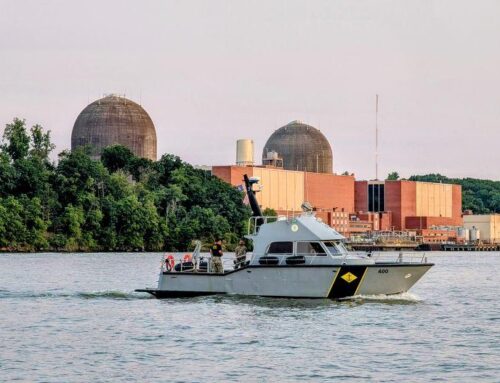Caltrain to earn from clean electricity fed back into the grid
October 27, 2025
Caltrain will begin receiving payments for the clean electricity its new electric trains return to the grid through regenerative braking, following policy changes by its renewable energy partners Peninsula Clean Energy (PCE) and San José Clean Energy (SJCE).
Powered entirely by renewable sources — primarily solar and wind — Caltrain currently feeds back about 23% of the electricity it consumes into the power grid, providing emission-free energy to homes and businesses along its corridor.
Under the new agreement, Caltrain will qualify for a Net Billing Rate starting in April 2026, allowing the operator to earn around USD 1 million annually for the energy it supplies to the grid.
Lori Mitchell, Director of San José Clean Energy, said the initiative represents a first-of-its-kind policy for public transport in California.
“Caltrain’s new electric trains don’t just use electricity—they also give some back. Our Green Transportation program is the first in the state and one of the few in the country to give credit to public transit systems like Caltrain for the energy they return to the grid, helping them save money and reduce pollution.”
Peninsula Clean Energy CEO Shawn Marshall highlighted the broader environmental benefits of the partnership.
“Our partnership with Caltrain and its bold move to all-renewable and carbon-free electric rail service have already improved the quality of life for our communities and illustrates how powerful local, community-driven leadership can be in better meeting customer needs. And now with the new regenerative braking, their cleaner, quieter and more efficient travel will send even more emission-free power back to the larger regional grid.”
Legislative backing for energy compensation
The policy change aligns with Assembly Bill 1372, authored by Assemblymember Diane Papan, which recognises regenerative braking from electric trains as a renewable electricity generation source. The bill would require energy providers to compensate rail operators for the power they return to the grid.
“I’m pleased to see that the renewable energy that Caltrain is sending back to the grid is being recognized and fairly compensated,” said Assemblymember Papan. “This is the right thing for supporting public transit and highlighting the incredible benefits from electrification.”
Once the bill takes effect, Caltrain could receive a further 20% in compensation from its energy distributor PG&E, in addition to the revenues enabled by PCE and SJCE’s policy changes.
Electrification milestone and lower operating costs
Caltrain Executive Director Michelle Bouchard said the agreement adds to the significance of the operator’s ongoing electrification programme.
“Caltrain running train service on 100% renewable energy for the first time in 161 years is a victory in and of itself. But now that our partners at PCE and SJCE have agreed to compensate us for the power we return to the grid, we have yet another reason to celebrate our transition to the electric fleet. I thank PCE and SJCE for their dedication to both public transit and clean power, and Assemblymember Papan for leading the charge on this issue. We’ll all be breathing easier because of their efforts.”
Originally projected to cost USD 19.5 million per year, Caltrain’s electricity expenses have been revised downward to USD 15.3 million, based on current average energy consumption of 207 MWh on weekdays and 175 MWh on weekends. The use of 100% renewable electricity also qualifies Caltrain for revenues under California’s Low Carbon Fuel Standard programme, further reducing overall energy costs.
How regenerative braking works
Regenerative braking — first introduced to electric trains in 1886 — works by running an electric motor in reverse, capturing energy that would otherwise be lost as heat. Caltrain’s new electric fleet is designed to feed this recovered power back into the Overhead Contact System (OCS), which then transfers it to nearby traction substations.
The returned energy can either power other trains on the line or be fed directly back into the local grid, contributing to regional renewable energy supplies.
With these developments, Caltrain strengthens its role as a leader in sustainable rail operations, combining technological innovation, public policy, and clean energy partnerships to cut emissions and improve cost efficiency.
Search
RECENT PRESS RELEASES
Related Post





